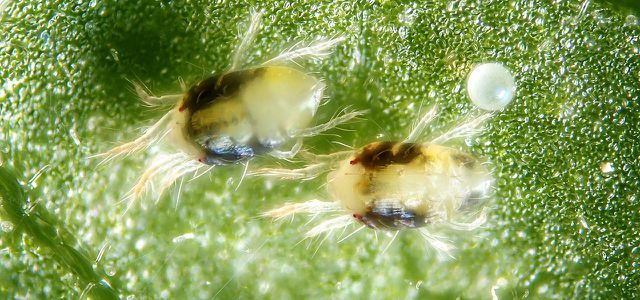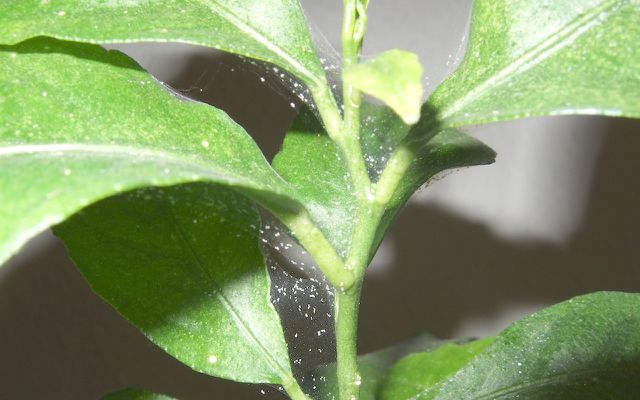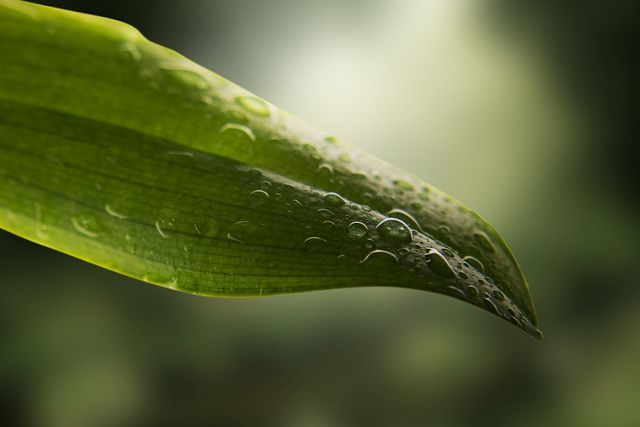
Spider mites regularly infest houseplants. To get rid of the pests, you do not have to reach for the chemical club. Here’s how to control spider mites without poison.
Spider mites are a typical pest of houseplants. The most common representative of these pests is the common spider mite. It grows to just half a millimeter in size and is barely visible to the naked eye. There are also the orchid spider mite, the cactus spider mite and the greenhouse spider mite.
Contents
Spider mites – this is how you recognize them

You can usually tell that a plant is infested with common spider mites by these symptoms:
Fine, light-colored speckles on the top of your plants’ leaves
Fine spider threads between the plant parts
The light speckles on the top of the leaves occur because the mites bite the plant and feed on the plant juices. Depending on the infestation, the leaves may turn completely light-colored or eventually dry up. Many plant owners think the speckles are signs of deficiency.
If you discover suspicious leaves on your plants, your next step should be to look for the spider threads. Since you can’t always see them with the naked eye, it can be helpful to dust the plant with a little water. The fine water droplets will make the spindles visible. However, the spider webs only appear on the common spider mite.
Causes of spider mite infestation
The occurrence of spider mites has one common cause: dry indoor air. For this reason, spider mites also mainly appear in the fall and winter months, when the air in the room becomes noticeably drier due to heating. The tiny plant pests feel particularly at home in the dry room climate.
Spider mites particularly frequently and readily infest certain houseplants:
- Indoor Ivy
- Fuchsia
- Cypergrass
- Rubber tree
- But all other houseplants can also fall victim to the mites.
Control spider mites without poison
Like most pests, you can easily control spider mites if you eliminate the cause of the infestation. In the case of spider mites, this means providing humid air. Spider mites do not tolerate high humidity. And this is how you proceed:
- Rinse the infested plant thoroughly with water in the shower.
- Put a transparent plastic bag over the plant and close it tightly directly over the root ball.
- Leave the plant like this for two weeks.
- The effect is simple. The bag basically acts like a greenhouse. Inside, the humidity rises so much that the mites die off after two weeks at the latest.
Removing spider mites with pesticides
In case of particularly heavy infestation, or if many plants are infested with spider mites, the described procedure is sometimes no longer sufficient. In this case, you can resort to “gentle” plant protection products. For example, there are preparations based on rapeseed oil. The oil covers the mites and thus closes their breathing holes.
Another possibility are neem plant protection preparations. These preparations are based on active substances from plant parts of the neem tree. The plant contains various substances that can help against pests.
If you decide to use plant protection products to rid your plants of spider mites, it is best to seek advice on suitable products from specialist dealers. In addition, you should always read and follow the application instructions carefully. This also applies to preparations based on natural active ingredients.
Spider mites – prevention instead of control

You can also prevent an infestation with spider mites very easily. The easiest way to prevent an infestation is to provide increased humidity around your plants. You can do this:
Spray your plant regularly with water, especially during the cooler months of the year.
Place the plant on a wide saucer and fill it with water.
Both measures ensure that the humidity around the plant increases and spider mites do not feel comfortable.

